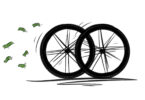Human vs. AI – that is the great challenge of our time, and bike fitting is no exception. Finding a bike fitter is no longer limited to Google searches or personal recommendations, but now also includes bike fitting apps and websites. Digital fitting offers convenient access to bike setup at a relatively low cost. But are the results comparable?
Cycling is certainly not the most economical hobby. Many enthusiasts, including ourselves, invest a considerable amount of money in bikes, wheels and marginal gain products. But even with a top-of-the-range bike and state-of-the-art equipment, you can spend an awful lot of money on your passion and still end up with knee or back pain if your bike doesn’t suit your body proportions. The real performance gain often lies not in components such as ceramic bottom brackets, but in achieving optimal biomechanics, namely the correct riding position. Surprisingly, relatively few riders choose to have their bike fitted. Is this due to a lack of awareness of the benefits, the perceived cost or the time involved? It’s perplexing when you consider that a bike fitting often costs a fraction of the total equipment cost, while the benefits last for a long time – especially if you don’t change your bike. But you will often face barriers when it comes to bike fitting. Sometimes a qualified fitter can be hard to find, or there isn’t one nearby, making the whole process rather time-consuming. The cost of hiring a fitter can also be a deterrent. So we asked ourselves: Can AI replace a bike fitter? Is a session with a fitter or a digital application a guaranteed method of getting the perfect fit, or is it a matter of chance? To explore these questions, we had our editor, Martin, undergo a new bike fitting using two different digital applications and two human bike fitters. We compared the fitting process and the results for you.
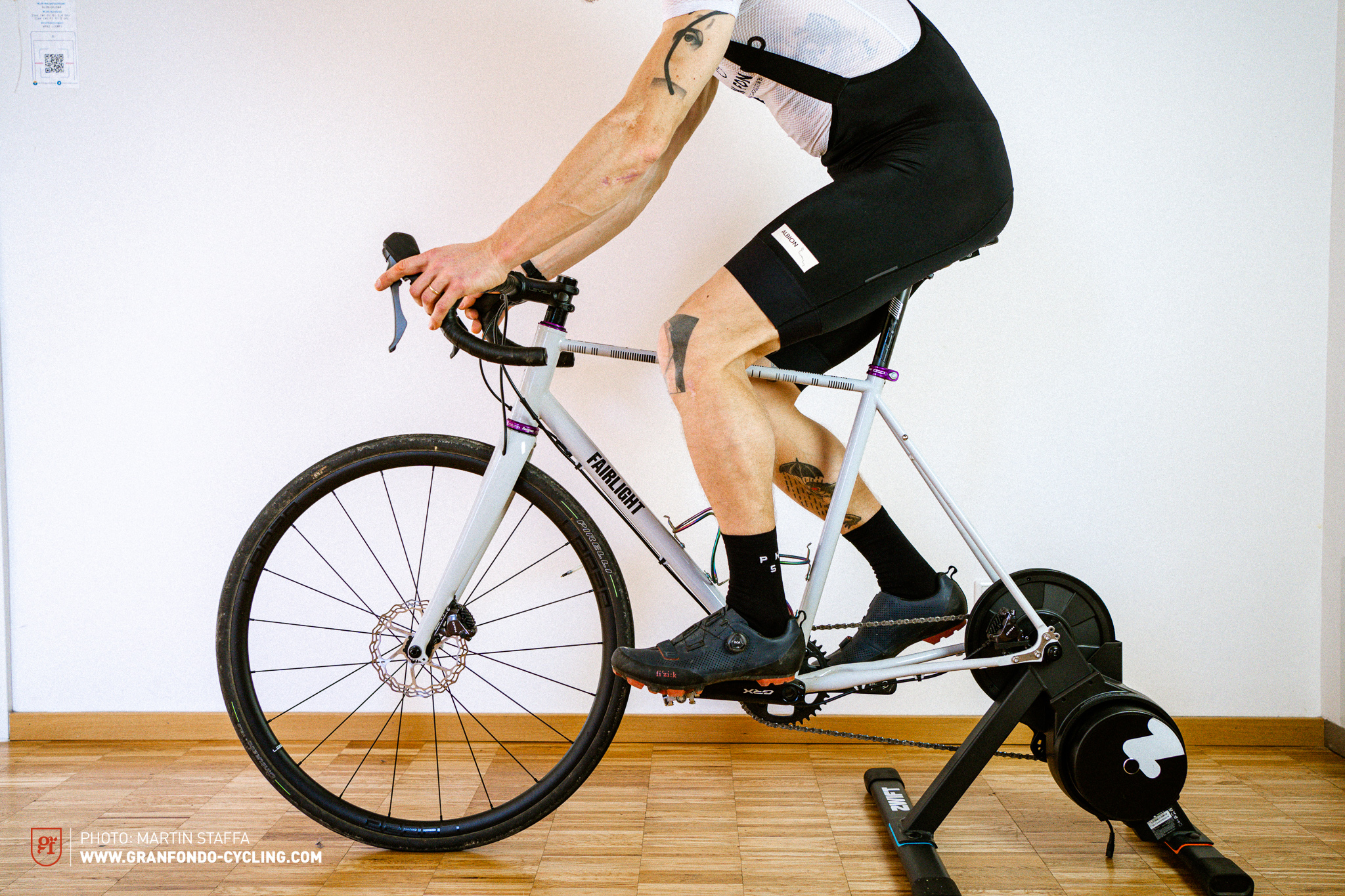
Theory – Frequently Asked Questions regarding bike fitting
To understand the basics, we asked our fitters what bike fitting actually is, who benefits from it, what the most common adjustments are and much more.
WWhat is bike fitting?
Bike fitting is essentially the process of adjusting the bike to suit the rider’s goals and physical abilities. The focus is on ergonomics and optimal power transmission. The adjustments affect everything on the bike, from the saddle height and handlebar angle to the cleat positioning on the shoes. Objective aspects such as mobility and joint angles are taken into account, as well as the subjective feel of the rider.
What are the benefits of a bike fitting?
Essentially, a bike fitting aims to optimise both comfort and performance. If done properly, you should be able to ride for long periods without discomfort, and notice an increase in performance due to improved power transmission.
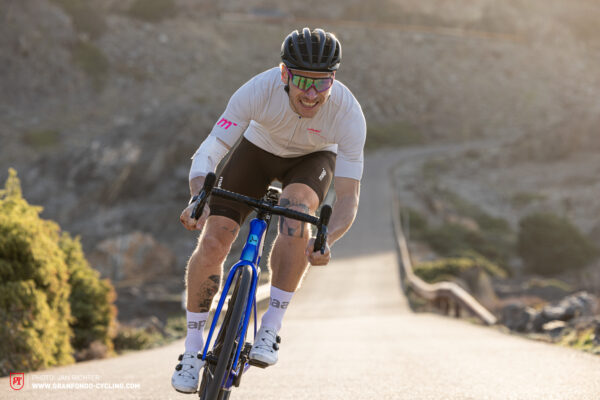

When should you get a bike fitting?
Either before or after you buy a bike. In other words, to find the ideal frame, the right size or to set up your bike perfectly. If you want to ride more often and for longer, you will also benefit from a bike fitting. It is particularly important if you experience pain, numbness or similar discomfort when cycling.
What are the typical reservations about bike fitting?
There is often a fundamental scepticism about bike fitting. This attitude can range from “they’re just trying to sell me something” to the belief that only professionals need such services. Some adopt the attitude that “a little pain is part of biking”, while others think they can do it themselves or with the help of YouTube tutorials. Sometimes it is a lack of belief in the craft of bike fitting.
Who doesn’t need a fitting?
Everyone can benefit from a bike fitting! Whether someone really needs it depends on their own goals. But let’s put it into perspective: Who needs ceramic bearings for € 600?

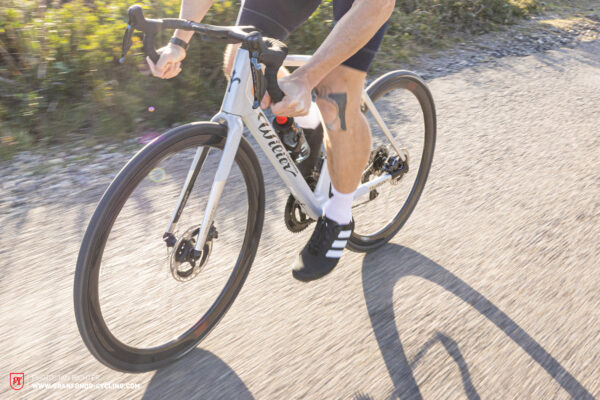
What are the main issues you encounter?
The most common area of concern is around the pubic bone. The saddle area is therefore undoubtedly the primary point of adjustment. The neck and knees are also often weak points, especially on long rides, and can cause significant discomfort.
What is the most common adjustment?
The saddle height is almost always optimised.
Are there “unsolvable” cases?
Well, there are cases where we don’t have all the solutions at hand. In other words, sometimes the search simply takes more time than a standard bike fitting. For example, if the new riding position doesn’t feel quite right.
How much of a bike fitter’s work is still manual/personal and how much is done by the system/computer?
Achieving the ideal fitting is difficult without effective communication. While technical aids can make a significant contribution, their value is limited without feedback from the athlete. A 60/40 (man/machine) ratio seems realistic.

In practice: Four bike fittings, one setup
To assess the objectivity of bike fitters and compare them with bike fitting apps, we enlisted our editor Martin as a tester. His new bike, a Fairlight Strael, and his vision of setting it up correctly formed the basis of all the bike fittings we tested. The aim was to configure the new bike for both comfort and optimum performance, suitable for activities such as bikepacking, brevets and various long-distance rides. Martin did four fittings on the same bike, using two different apps and working with two bike fitters. After each fitting, the starting position was restored, although not 100% back to the original, because after 300 km on the new bike, Martin had already shortened the stem from 110 mm to 80 mm as his back didn’t like the stretch. The rest of the adjustments were made by feel, and these settings were used as a starting point for each fitting.
Bike fitting apps
The number of bike fitting apps available is surprisingly small, especially when compared to the vast number of local bike fitters and YouTube videos on the subject. There are currently only a handful of bike fitting apps available to download from the Apple and Android app stores. There is also the MyVeloFit platform, which is a website rather than an app. We took a closer look at MyVeloFit and the Apiir app. One important note: to fit a bike using an app or software, you will also need a roller trainer, a tripod and a mobile phone holder. A good understanding of English, including cycling vocabulary, is also required. We only found apps in English. You will also need some technical knowledge to set up and adjust your bike, of course.
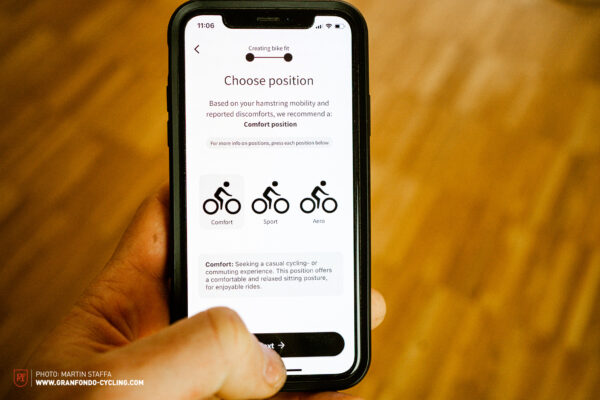
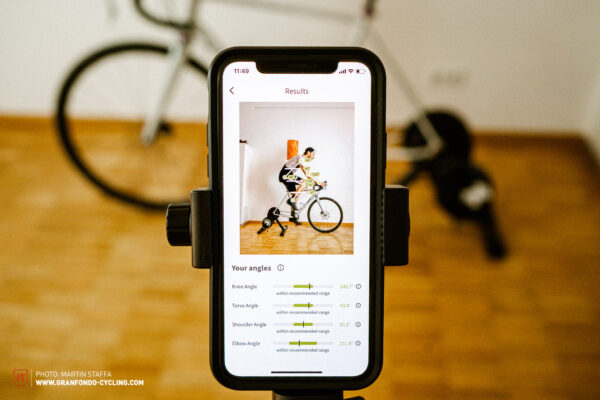
Apiir
At Apiir, all bike fitting is done through the app – you use it for everything from entering information and submitting videos, to analysing the results. For the price of € 24.99, you get seven days of unlimited bike fitting, allowing you to make and check adjustments on the bike at any time during this period. The process starts with registration, entering various personal details, followed by a body scan to assess your general physique. The mobility test that follows consists of a single exercise: touching your toes. This is designed to test the mobility of the hamstrings, a group of three muscles at the back of the thigh. They are mainly responsible for bending the knee joint. The result is expressed in school grades from A to F.
The next step is to create the bike profile and specify the stem length. You can also choose between three profiles – Comfort, Sport and Aero – to define the primary use. This is followed by a ride on the trainer, which is recorded on video, taking a series of different videos according to the specified steps. Each step consists of an analysis of different angles of the knee, hip, shoulder and elbow, accompanied by an assessment using bar graphs and suggested adjustments. Through this process you should gradually arrive at your optimum riding position. The final step is to enter your seatpost and saddle position values.
Overall, the app is very clear and easy to use. It takes around 60 minutes to fit a bike, with minor changes such as saddle position. Overall, you get a solid result, but little explanation and information. But with the newest app update Apiir wants to include more information and education. 7 days is not much time if you want to test the settings in detail, so it’s important to choose this period carefully.
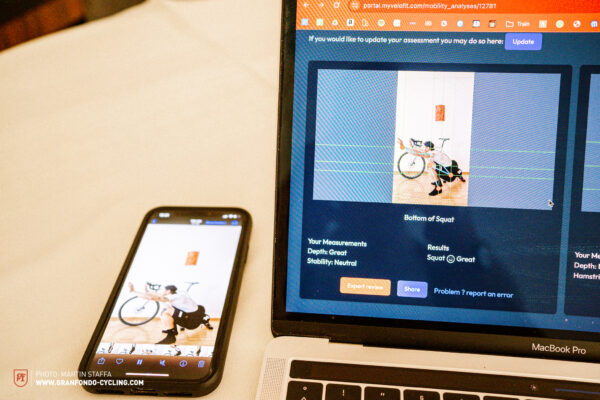
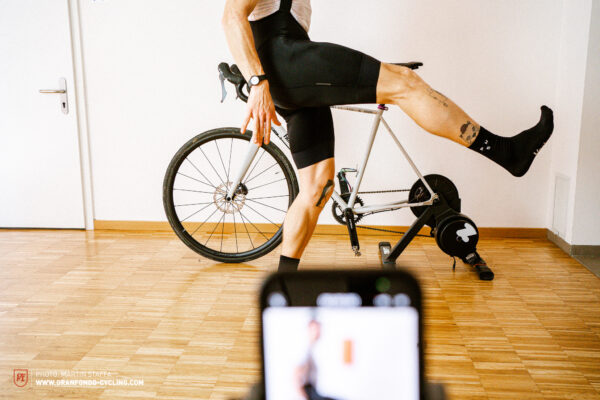
MyVeloFit
At MyVeloFit, everything runs via the website, from registration and login to fitting. Three different price options are available:
Starter: basic fitting for one rider and one bike: $ 0
Enthusiast: one bike, one rider, two weeks of full fitting and analysis: $ 35
Pro: one rider, unlimited fitting, unlimited bikes, full analysis for one year: $ 75
MyVeloFit also offer an expert analysis by Jesse Jarjour (co-founder and CEO) for $ 75. In addition to bike fitting, MyVeloFit also offer the option of determining the correct frame size. This involves printing two markers and attaching them to the rider’s body, followed by a body scan.
The bike fitting process is very similar to Apiir: create a profile, then provide personal details such as age, height, weight and years of experience. A mobility test must then be recorded on video. This can be done either with a smartphone camera or, in a beta version, with a webcam in or on a laptop. For the lower body, three exercises must be performed in a row: deep squats with arms raised, touching the toes, and bending and stretching the legs. Upper body mobility is assessed through a shoulder mobility test, which involves bringing the arms together behind the back. The videos are then uploaded to the website, and a three-point smiley scale is used to assess mobility. An example:
Hamstring Mobility: 🙂 Great
Hip Mobility: 😐 Neutral
Lower Back Mobility: 😐 Neutral
Shoulder Mobility: ☹️ Limited
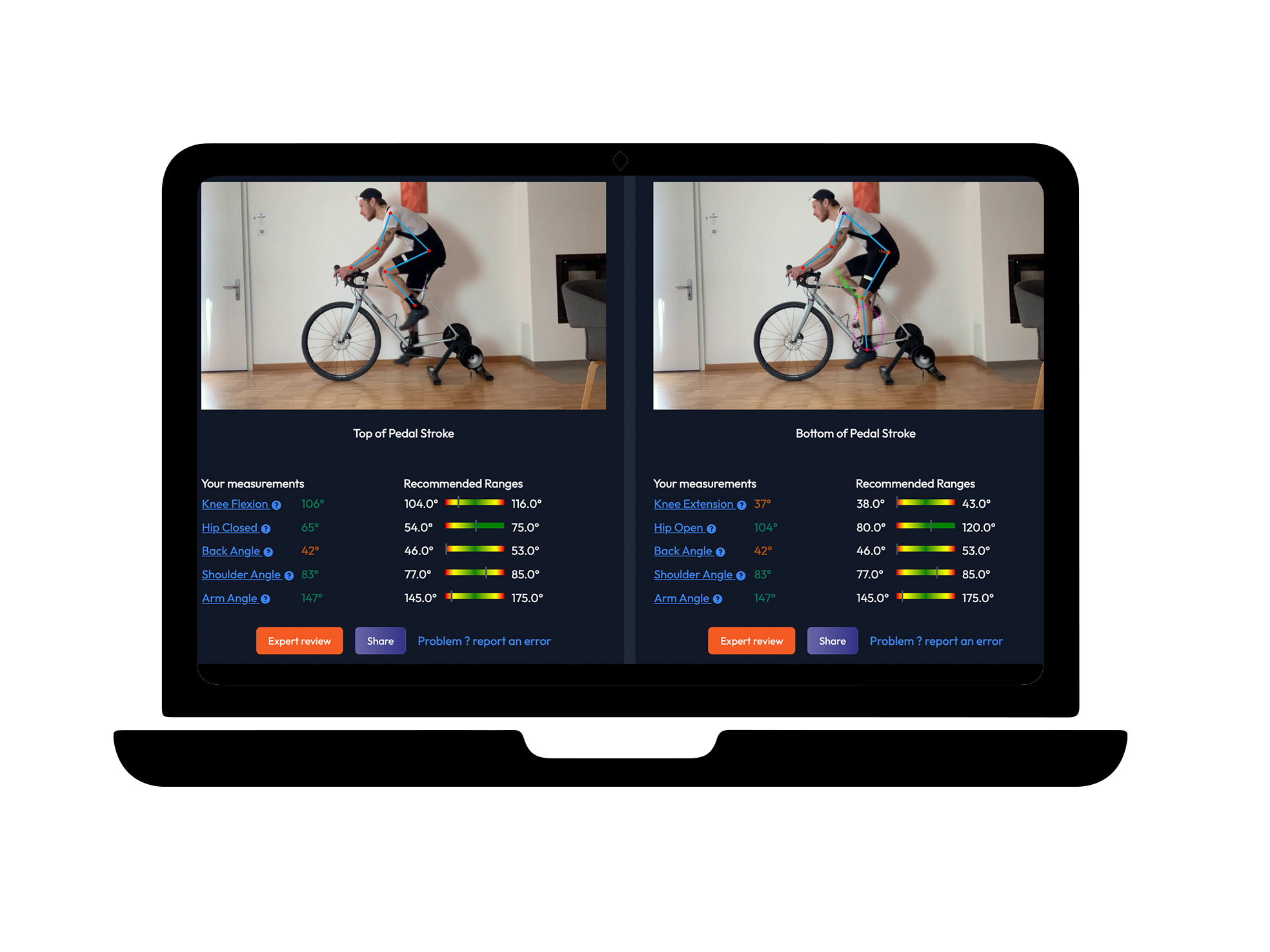
A fit session is then started to determine the fit goal (within the three options called comfort, comfort/performance and performance), bike name and bike type. The fitting is carried out via video analysis, with detailed instructions, tips and tricks to achieve the best result. The video is then uploaded to the website, which requires a transfer to the computer or direct upload from your mobile browser. You will then receive suggestions for changes and an analysis of whether you have achieved your optimum position. This includes a comprehensive examination of the different angles during a full pedal revolution. Again, the whole process typically takes around 60 minutes.
With MyVeloFit you will feel that you have been analysed more comprehensively, thanks to the relatively extensive and meaningful mobility test, and that the evaluation goes deeper than with the Apiir app. Nevertheless, the results and recommendations are the same. The assessment of the different mobility areas also provides suggestions for mobility exercises, but no instructions. The tutorial videos and “tips and tricks” help to give you confidence that you’re doing everything correctly, and the web interface is clear, if a little functional and boring.
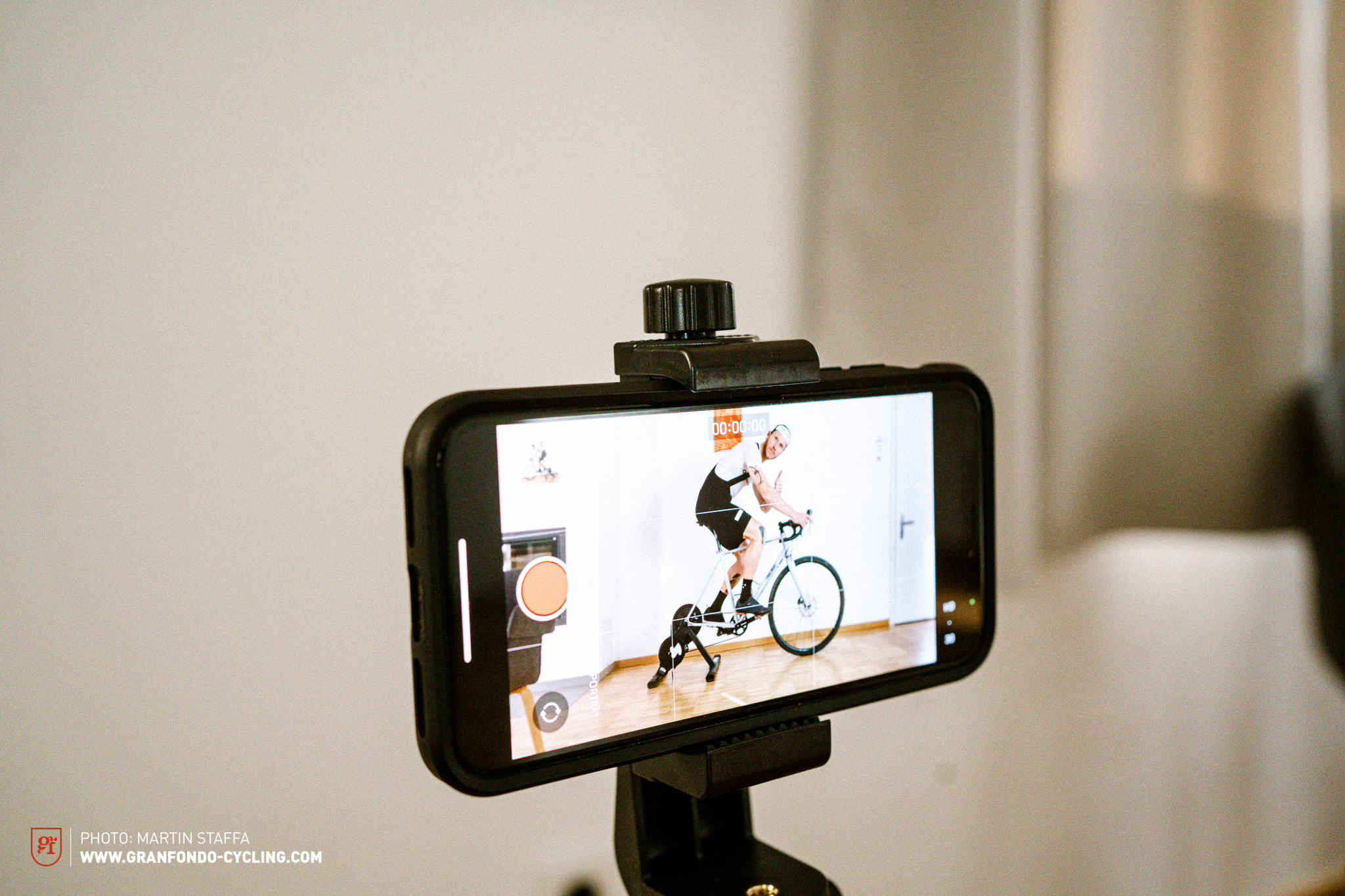
Conclusion on the bike fitting app and website
In essence, both the bike fitting app and the website follow the same approach. A video analysis of the bike and rider is used to evaluate various factors, leading to recommendations regarding the riding position and possible modifications. This could include moving the saddle forward or back, or adjusting the stem length. The time investment is reasonable, and the results provide a basic overview of your riding position on the bike. However, factors such as cleats, handlebar width, the angle of your hoods as well as the angles of your wrists and ankles are not taken into account. Given the price of € 25 for Apiir and $ 75 for the MyVeloFit Pro version, this seems acceptable. MyVeloFit can be particularly useful if you own several bikes.
Bikefitting in Persona
MotionLab Leipzig
MotionLab are a company specialising in motion analysis, with offices in Leipzig and Magdeburg. In addition to bike fitting, they offer running analysis, performance diagnostics and training management. Using a variety of techniques and approaches, including the gebioMized bike fitting system, one of their main focuses is on assessing body type through motion analysis and identifying instabilities. Our fitter, Tom Hoffmann, has been with MotionLab in Leipzig for over 9 years. MotionLab offer three bike fitting packages: Basic, Pro and Premium, with costs ranging from € 159 to € 299 for sessions of approximately 75 to 180 minutes. The Basic package, priced at € 159, includes lateral video analysis and functional diagnostics. The Pro package, which we opted for, includes saddle or in-shoe pressure measurement and a frontal video analysis for € 219. The Premium package, costing € 299, includes both saddle and in-shoe pressure measurement.
Bike fitting at MotionLab begins with a run through your medical history, followed by an assessment of your physical condition. Tom carries out a series of mobility and strength tests and the results are discussed in detail. Essentially, Martin’s range of motion is adequate, but not yet at an advanced level. However, the most important finding is that several of the supporting muscles in his legs are insufficiently developed. To address this, Tom gives him three stabilisation exercises to do on a regular basis.

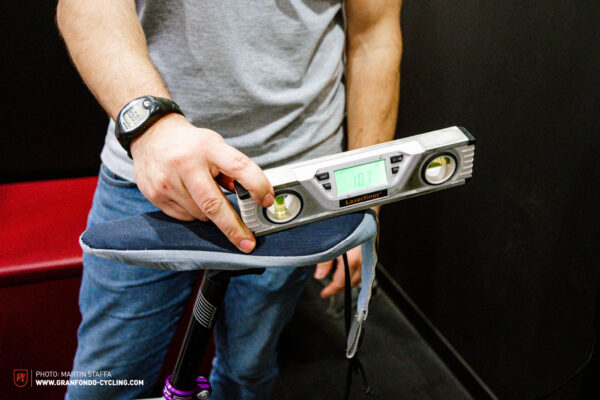
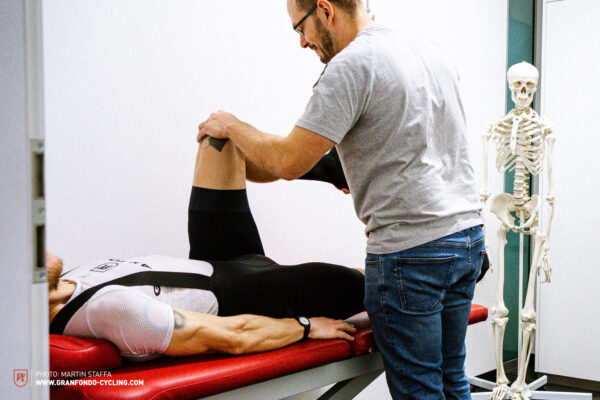
The physical examination is followed by a video and saddle pressure analysis. Tom personally records the results live on the computer, including angles of all joints and a view of his neck. Once this data has been analysed, the first adjustments are made. The next step is to adjust the cleats to match the natural angle of the foot – typically, this is slightly outwards. Following these adjustments, Tom returns to the bike to repeat the video and saddle pressure analysis. In addition, levers are repositioned, and further adjustments are made to stem length and handlebar height. This process is repeated until the combination of rider feel and analysis data is as close as possible to the ideal setup.
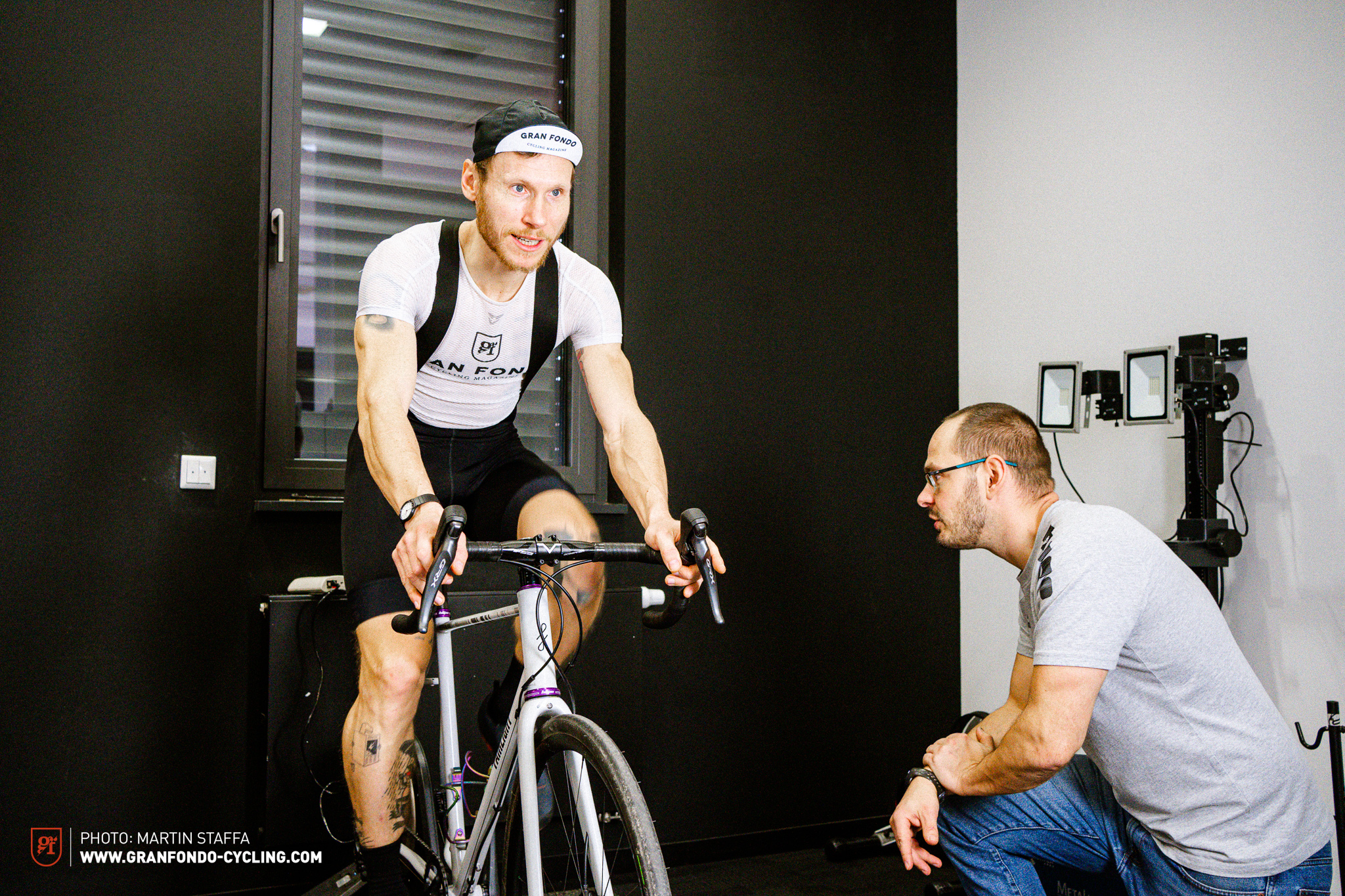
At MotionLab, the interaction between fitter and rider is paramount. This implies a synergy between technical analysis and the rider’s individual perception. Ultimately, it is the rider’s personal impression that determines whether or not a setup is deemed suitable. This could mean that the angles and saddle pressure may not be at their supposed optimum. It can also mean that the fitting process takes longer than the package price implies. In our case, the fitting took almost exactly 2.5 hours.
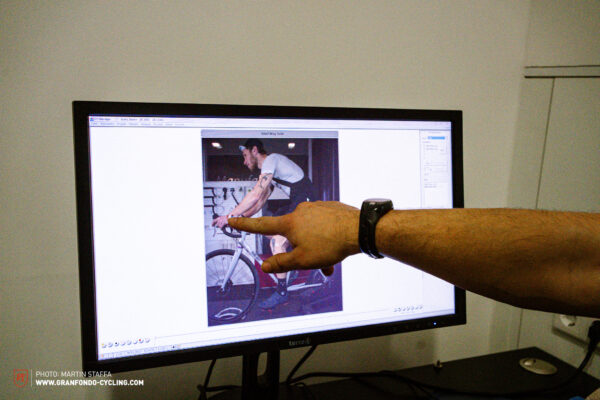

Torsten Hiekmann with the Retül system
Torsten Hiekmann, a former professional cyclist who rode for Team Telekom and Team Gerolsteiner, including alongside Erik Zabel, is now a coach and bike fitter in Jena and Radebeul. Torsten has been using the Retül system, which was largely developed by Specialized, for over 12 years. The mobile nature of the system allows it to be set up almost anywhere, regardless of location. For our session we chose the Lucas Bikes shop in Blankenhain, in the heart of Thuringia. Torsten is friends with the owners and the atmosphere is more than fitting for a bike fitting. His fee is a fixed € 250 for each bike fitting, regardless of the duration.
Like at MotionLab, the bike fitting process begins with a physical assessment. The physical examination ranges from the soles of the feet to the top of the head, and is designed to establish the status quo. In Martin’s case, this mainly involves postural deficits such as bow legs and a shoulder slump. Torsten gives him two exercises to address these issues. Torsten also uses tools to measure ischial tuberosity and foot (mis)alignment. This shows that our editor’s foot length differs by a full size! Wow! The former professional cyclist also diagnoses a flat arch on the right side, suggesting the need for shoes half a size larger with special insoles. The fitter also fine-tunes the cleat position on the shoe. Martin’s instincts on the saddle size he chose were also spot on and in line with the results.
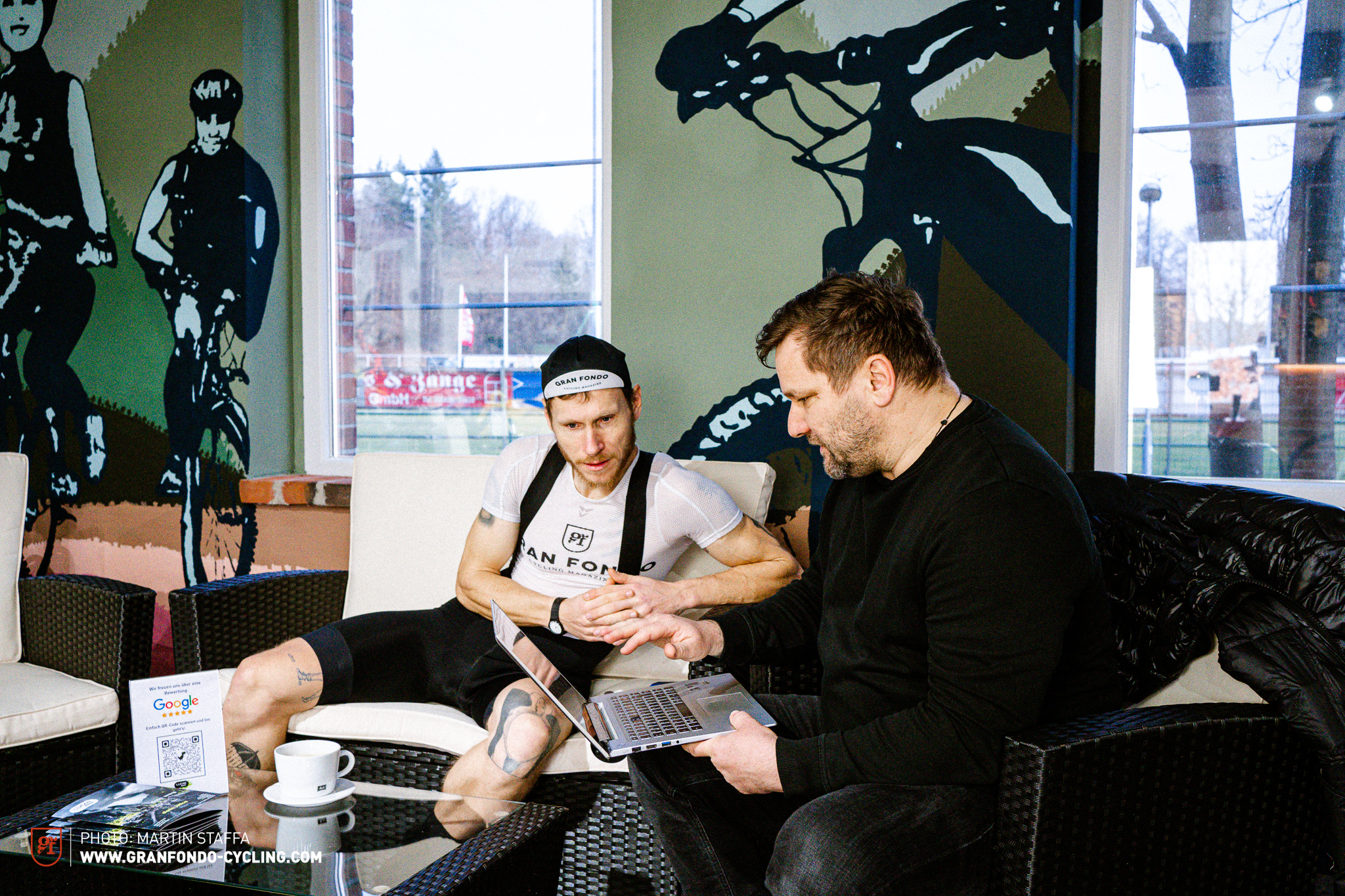
Torsten then enters all the data, including age, height, etc., into the Retül form. The rider’s goals are also discussed here. Then it’s on to the bike, where various measuring points are attached and wired up. After a short warm-up period, the Retül system initiates the bike analysis, which essentially captures all angles of the rider’s extremities. The ex-professional cyclist then interprets the results. Similar to the apps, there is an ideal range from angle X to angle Y. Adjustments are made and the change in values is analysed. Torsten also takes a look for himself to identify any anomalies and makes further changes if necessary.
With very little to adjust in Martin’s case, our bike fitting with Torsten took just over two hours. Similar to MotionLab, you get thorough, friendly and personalised support. Torsten’s extensive experience from years of active cycling is evident and his expertise extends far beyond the fitting process, including the Retül system. Ultimately, it’s not Retül that has the last word, it’s Torsten’s judgement.

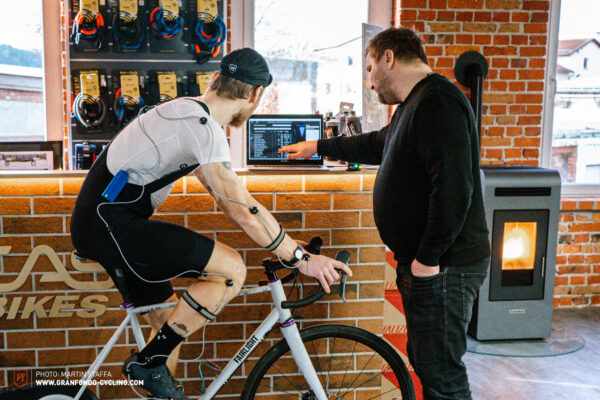
The results
Martin had adjusted the bike by feel before the fittings, settling somewhere between a relaxed, upright position and a more aggressive race position. The key point is that people who have spent several years and thousands of kilometres in the saddle generally have a rough idea of whether and how a bike fits – provided they have a healthy level of self-awareness.
The second important observation is that both bike fitters and apps rely on essentially the same parameters – joint angles and their relationship within the movement sequence. They also take into account the rider’s physical condition and movement patterns. However, a fitter uses much more than a few mobility tests; factors such as movement patterns, complaints and any medical history, as well as addressing poor posture, are equally important. Furthermore, the role of the cleats, which are crucial for power transmission and comfort, is not considered by any of the digital bike fittings tested. Currently, bike fitting apps and websites do not assess anything beyond a one-dimensional view of the bike from the side.
Another interesting result, particularly when comparing the fitters, is that each has a different focus and approach, providing different yet valuable insights. For example, Torsten emphasised the importance of insoles, while Tom highlighted the importance of training support muscles and ensuring the correct angle of the brake levers. The experience gained from a single bike fitting has a profound and lasting effect. Once you know what the ideal position feels like, you can apply that knowledge to other bikes – this applies to both the digital and in-person fits.
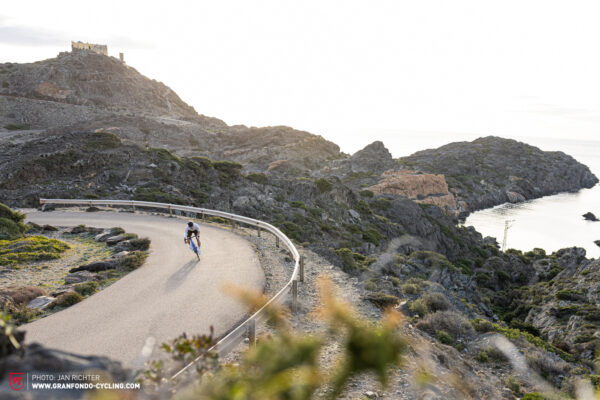
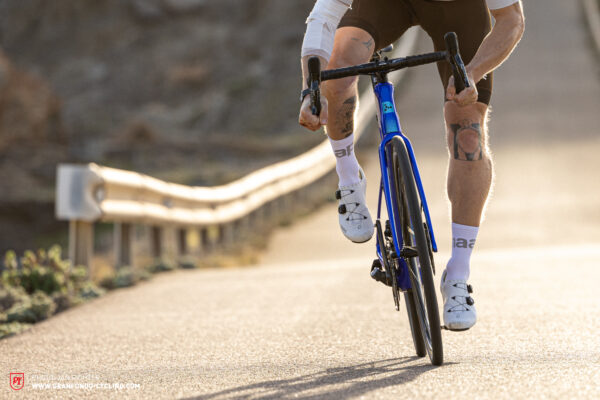
A very important part of all of the fittings, and one that I’m sure many of us pay little attention to, is the importance of mobility. Cycling and training is not just about pedalling for long periods of time; it is about spending time on mobility routines, especially stretching. Mobility undeniably has a significant impact on your riding position and performance. It is important to look after and strengthen the passive muscles, i.e. all the muscles that are not directly involved in power transmission.
And how did the final results feel? While there were – except for the 1,8 cm saddle drop with Apiir – no major overhauls in any of our fittings, even the minor adjustments made a noticeable difference. There have been some improvements in both comfort and power transmission. Of course, Martin was a little disappointed that he wasn’t suddenly transformed into a pro athlete, but then again, if it was that easy, race podiums would be very crowded places. But the value goes beyond podium glory: feeling good on the bike for the whole ride and avoiding discomfort are achievable goals with the right fitting. It’s an investment in the assurance of that good feeling, like an insurance policy. Post fitting, there are no more questions about whether the bike and its settings fit. Martin now has the confidence that he is in perfect harmony with his Fairlight Strael. A real relief, and well worth the investment of time and money.
| Motion Lab | Retül | Apiir | MyVeloFit | |
|---|---|---|---|---|
| Stem length | 10 mm longer | no change | no change | no change |
| Handlebar height | 10 mm höher | no change | no change | still ok, but could be a bit higher |
| Handlebar width | no change | no change | not measured and not specified | not measured and not specified |
| Seat position | 4 mm further forward | 7 mm further forward | 3 mm further forward | no change |
| Saddle height | no change | 3 mm higher | 1,8 cm lower | no change |
| Cleats | 6 mm further forward | 8 mm further forward | not measured and not specified | not measured and not specified |
| More information and tips | – various corrective exercises and stretches necessary for stability, – Brake lever angle adjusted outwards |
– feet differ by almost one size, – right foot has a high arch, suggested action: insoles. – In addition, focus on stretching, especially opening the hips. |
not specified | – Insufficient shoulder mobility |
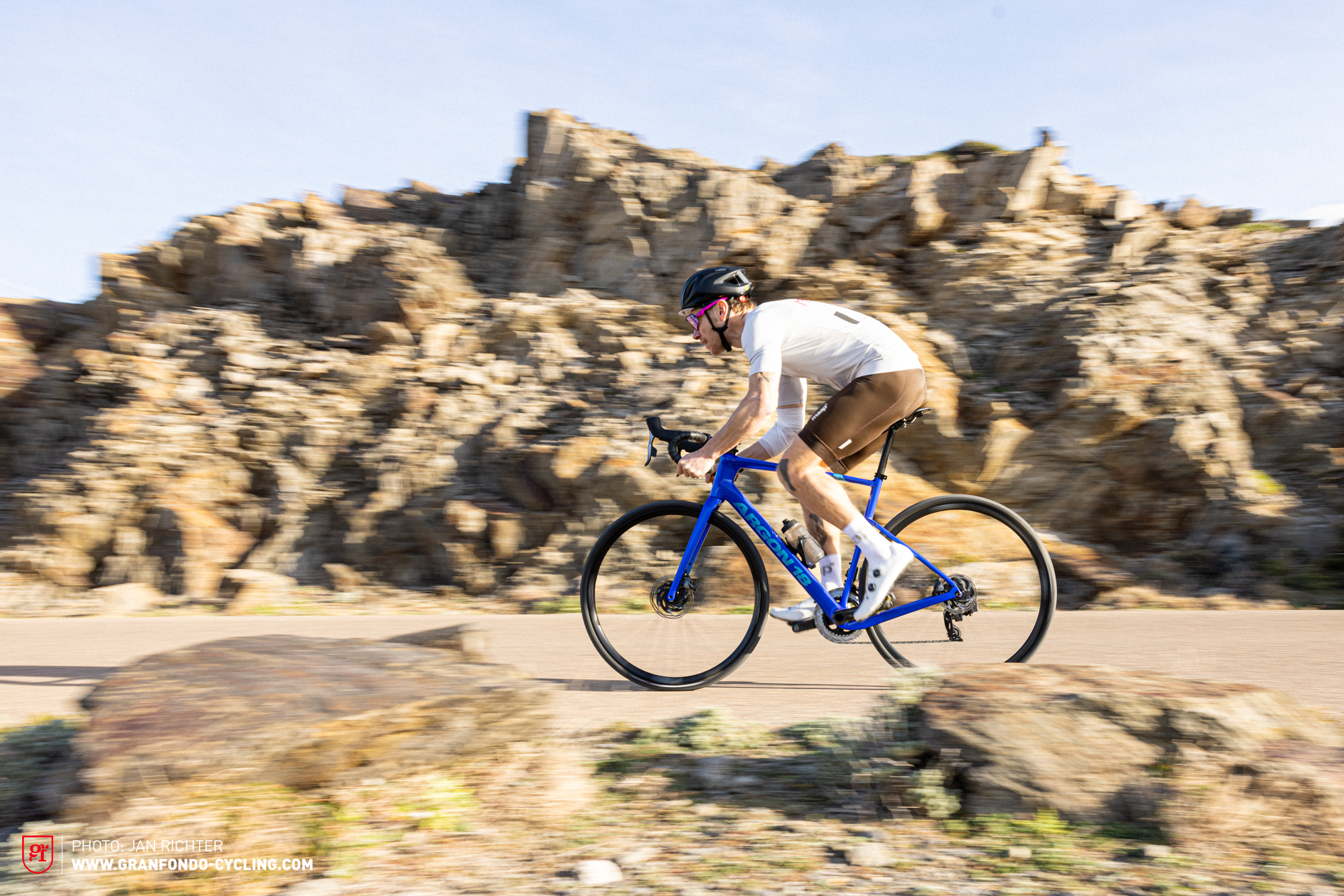
Which type of bike fitting fits you best?
The APiiR app is ideal for beginners making their first foray into drop bar bikes, especially those who have recently purchased their first bike and have only limited experience. It provides a quick, relatively inexpensive and basic analysis to determine if the bike and rider are a good match, along with suggestions for basic adjustments. If you’ve been cycling for a while and have several categories of bikes in your garage, MyVeloFit will be a valuable tool for finding the optimum riding position. However, for ambitious bikers who want a professional and comprehensive analysis of their riding position, a personal bike fitting remains essential. Despite the use of clever AI, the effectiveness of bike fitting apps still cannot be compared to a real, hands-on bike fitting.
Conclusion
Both humans and technology play a crucial role in achieving the ideal riding position. The human element involves the interaction between the rider and the fitter. While AI and bike fitting apps can help find a good riding position, they currently lack the ability to provide an in-depth analysis and multi-dimensional recommendations. Fitters, being human, bring their own experiences and character traits to the bike fitting process. They are not completely objective, they can only interpret the rider’s subjective experience and compare it to measurable values. In addition to the positive feeling after the fitting, Martin goes home with a good combination of results from both bike fitters, and some homework to address his mobility and stability issues.
Did you enjoy this article? If so, we would be stoked if you decide to support us with a monthly contribution. By becoming a supporter of GRAN FONDO, you will help secure a sustainable future for high-quality cycling journalism. Click here to learn more.
Words & Photos: Martin Staffa


